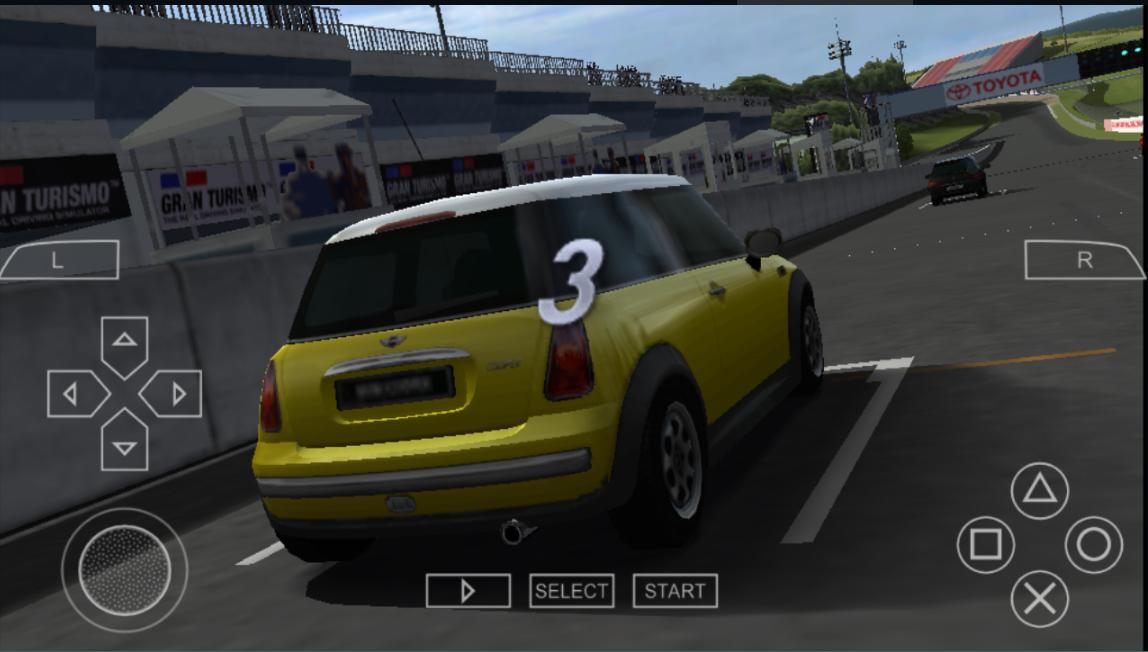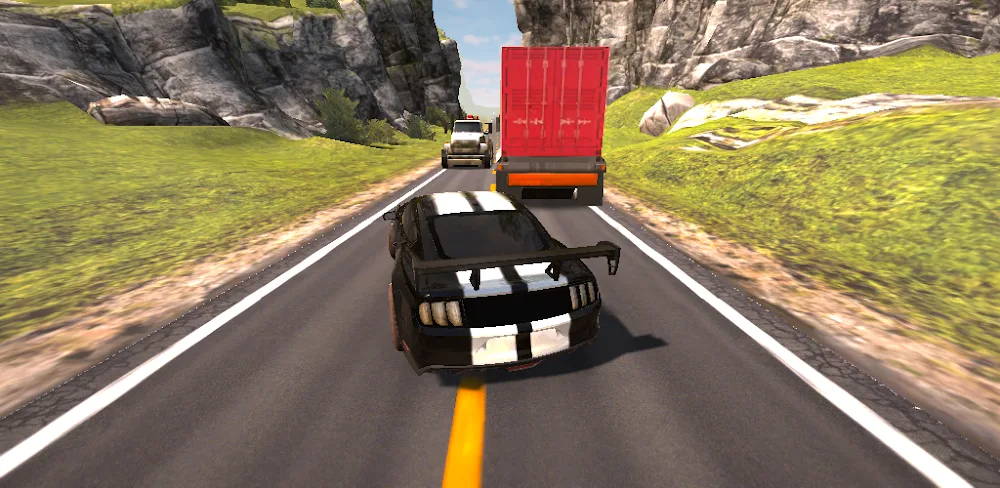
The landscape of video games is constantly evolving, with new platforms and experiences emerging regularly. Yet, certain titles leave an indelible mark, shaping genres and demonstrating the potential of gaming technology. Among these enduring classics, Gran Turismo PSP stands out as a pivotal release that brought the revered console racing simulation experience to a handheld device with remarkable fidelity. In an era dominated by home consoles, the idea of a comprehensive virtual garage and thrilling race tracks fitting into a player’s pocket was revolutionary. Today, as mobile gaming continues its rapid ascent and retro gaming experiences gain renewed appreciation, revisiting a title like Gran Turismo PSP offers valuable insights into the foundations of portable high-fidelity entertainment, showcasing a monumental achievement in handheld development and a testament to the enduring appeal of the Gran Turismo franchise.
The Dawn of Portable Precision: Gran Turismo’s Handheld Debut
The arrival of Gran Turismo on the PlayStation Portable (PSP) marked a significant milestone for both the venerable racing simulation series and the handheld gaming market. Prior to its launch, the notion of experiencing Gran Turismo’s signature depth, extensive car rosters, and realistic physics on a portable device seemed ambitious, if not impossible. Developed by Polyphony Digital, the same acclaimed studio behind its console counterparts, Gran Turismo PSP demonstrated a remarkable technical prowess, pushing the boundaries of what the PlayStation Portable hardware could achieve. The game’s commitment to delivering a true Gran Turismo experience on the go positioned it as a flagship title for the platform, captivating a global audience of racing enthusiasts and casual players alike.
Unlike its console siblings, which often featured sprawling single-player career modes, Gran Turismo PSP opted for a more immediate and flexible gameplay structure, perfectly suited for the pick-up-and-play nature of handheld gaming. This design choice, while initially surprising to some long-time fans, proved to be an innovative adaptation. Players weren’t bound by a linear progression system; instead, they were empowered to select their preferred vehicle, track, opponent difficulty, and number of laps. This dynamic adjustment of rewards based on player choices offered unparalleled freedom, allowing for quick, satisfying bursts of racing action or extended, customized sessions as desired. This innovative approach to gameplay ensured that every moment spent with the game felt purposeful and rewarding, whether one had five minutes or an hour to spare.
Beyond its core racing options, Gran Turismo PSP also integrated a robust “Driving Challenges” section. This component echoed the beloved driving tests and missions found in titles like Gran Turismo 4, providing a structured environment for players to hone their skills. While not mandatory for race participation, completing these challenges was highly encouraged, rewarding players with valuable bonus points, prestigious Silver or Gold ranking bonuses, and various other in-game perks. These challenges served as a vital tutorial and skill-building tool, guiding players through intricate maneuvers, braking techniques, and optimal cornering strategies that are fundamental to mastering the art of virtual racing. To understand how these principles apply to other simulation games, you might want to explore the evolution of racing simulations and the techniques involved in realistic driving mechanics.
The control scheme, while distinct from traditional console setups, was thoughtfully designed for the PSP’s ergonomic limitations. Players could customize button assignments to suit their individual preferences, ensuring a comfortable and intuitive driving experience. For instance, the D-Pad’s up and down arrows were repurposed for gear changes, while the X and O buttons offered primary acceleration functions. The R button, strategically placed for quick access, served as the handbrake. This flexibility in control configuration underscored Polyphony Digital’s commitment to accessibility and player comfort, recognizing the diverse ways in which individuals engage with handheld devices. This attention to detail in control customization further cemented Gran Turismo PSP’s reputation as a meticulously crafted and player-centric racing game.
An Unrivaled Roster: Cars, Tracks, and Skill Mastery
At the heart of any Gran Turismo experience lies an expansive collection of vehicles, and Gran Turismo PSP truly delivered on this promise, boasting a staggering roster that was virtually unprecedented for a handheld title. With over 800 types of licensed cars from numerous major international automotive manufacturers, players were presented with an encyclopedic garage of dream machines. From everyday commuters to high-performance supercars and legendary racing prototypes, the diversity of the car collection was a monumental achievement. Each vehicle was meticulously rendered, capturing the intricate details of its real-world counterpart, from body lines to interior dashboards. This dedication to authenticity provided an immersive experience that appealed to both car enthusiasts and casual gamers alike, offering endless possibilities for discovery and collection.
The sheer volume of vehicles was complemented by an equally impressive array of racing environments. Gran Turismo PSP featured 35 distinct tracks, which, when combined with various configurations and reverse layouts, translated into a total of 60 unique racing circuits. These tracks ranged from iconic real-world locations to imaginative fictional courses, each offering its own set of challenges and requiring different driving strategies. Players could engage in a variety of race modes, including classic time trials to test precision, high-octane speed races for raw exhilaration, and challenging drift competitions that demanded finesse and control. The breadth of content ensured that monotony was never an issue, as there was always a new car to acquire, a new track to master, or a new challenge to overcome.
The game also placed a strong emphasis on player skill development through its “Professional Driving Course.” This feature wasn’t merely a set of tutorials; it was a comprehensive training regimen designed to transform novices into seasoned virtual drivers. Comprising over 100 individual challenges, these courses focused on fundamental racing techniques: perfecting cornering lines, understanding the nuances of braking points, and maintaining optimal car control under various conditions. Success in these challenges not only improved a player’s race performance but also unlocked valuable rewards and instilled a deeper appreciation for the physics and mechanics at play. The meticulous design of these driving courses underscored the Gran Turismo series’ educational ethos, aiming to not just entertain but also to educate players about the art and science of driving.
The journey through Gran Turismo PSP was as much about building a personal collection as it was about winning races. The game fostered a sense of progression and accomplishment through car acquisition, modification, and ultimately, mastery. The extensive customization options, though simpler than console versions, allowed players to fine-tune their vehicles for specific races, adding another layer of strategic depth. For those eager to delve deeper into the rich library of titles on the platform, we invite you to deep dive into classic PlayStation Portable titles, where you can explore other groundbreaking games that defined the era.
Multiplayer and Interconnectivity: A Visionary Approach to Handheld Gaming
One of Gran Turismo PSP’s most forward-thinking features was its robust suite of multiplayer and interconnectivity options, which were remarkably advanced for a handheld title of its time. Recognizing the communal aspect of gaming, Polyphony Digital integrated features that allowed players to engage with each other, enhancing the overall experience beyond solo races. The “Connect and Share” functionality, utilizing the PSP’s Ad Hoc wireless capabilities, enabled players to exchange and share cars with friends. This not only provided a convenient way to enrich one’s personal collection but also fostered a sense of community and collaboration among players, encouraging social interaction around the game.
Beyond car sharing, the game truly came alive in its multiplayer racing modes. Up to three friends could connect wirelessly via Ad Hoc to compete in head-to-head races. This direct, local multiplayer experience was a highlight, bringing the competitive thrill of Gran Turismo to impromptu gatherings and travel. The inclusion of “Party” and “Shuffle Race” modes further demonstrated Polyphony Digital’s commitment to accessible fun. These modes were intelligently designed to balance the chances of winning for both beginners and experienced players, ensuring that everyone could enjoy the competitive spirit without feeling overwhelmed. This approach to multiplayer gaming was crucial in expanding the game’s appeal, making it a social hub as much as a solo challenge. To better understand how game developers balance skill levels in competitive environments, understand the nuances of competitive mobile gaming and the various strategies employed.
Perhaps the most visionary aspect of Gran Turismo PSP’s interconnectivity was its groundbreaking link with Gran Turismo 5 on the PlayStation 3. This cross-platform synergy allowed players to transfer their painstakingly acquired car collections from the handheld version directly into the console game. This feature provided a significant advantage to players transitioning to Gran Turismo 5, giving them a head start with a diverse garage right from the outset. This innovative approach not only rewarded players for their dedication to the PSP title but also showcased a pioneering vision for ecosystem integration between different gaming platforms, a concept that would become increasingly common in later generations of gaming. This foresight in design highlighted Gran Turismo PSP as more than just a standalone game; it was an integral part of a larger, interconnected gaming universe.
These advanced multiplayer and cross-platform features were a testament to the game’s ambition and engineering excellence. In an era predating widespread mobile online gaming and ubiquitous cloud saves, Gran Turismo PSP offered a glimpse into the future of connected gaming. It fostered a vibrant player community through direct interaction and rewarded loyalty with tangible benefits across platforms. Such features were instrumental in solidifying the game’s status not just as a technically impressive title, but also as a trailblazer in interactive gaming experiences.
Conclusion: The Enduring Appeal of a Portable Racing Masterpiece
Gran Turismo PSP stands as a monumental achievement in handheld gaming, a title that successfully distilled the essence of a complex console racing simulation into a portable format without compromising on depth or quality. Its technical prowess, evidenced by sharp graphics and a smooth 60 frames per second scanning speed on the PSP hardware, was nothing short of revolutionary for its time. Beyond the visual fidelity, the game offered an unparalleled content library, featuring over 800 meticulously detailed cars and 60 diverse track layouts, ensuring endless hours of engaging gameplay for enthusiasts and casual players alike.
The innovative gameplay structure, which eschewed a traditional career mode for a more flexible, pick-up-and-play design, proved to be perfectly suited for the handheld experience. Coupled with extensive driving challenges that served as a professional driving course, Gran Turismo PSP not only entertained but also genuinely helped players refine their racing skills. Furthermore, its visionary approach to multiplayer and interconnectivity, including Ad Hoc car exchange and multiplayer racing, alongside the groundbreaking ability to transfer car collections to Gran Turismo 5, showcased a forward-thinking design philosophy that predated many modern cross-platform gaming trends. These features fostered a vibrant community and extended the game’s lifecycle well beyond its initial release.
In retrospect, Gran Turismo PSP is more than just a classic racing game; it is a testament to the potential of handheld technology and a benchmark for portable high-fidelity experiences. Its influence can be seen in subsequent mobile racing titles that strive for realism and extensive content. For those who experienced it upon its release, it remains a beloved icon of their gaming history. For new audiences discovering it through emulation or retro gaming, it offers a fascinating look at a pivotal moment in the evolution of virtual racing. Revisiting this portable masterpiece today provides a fresh appreciation for its innovation and enduring legacy, reminding us that true quality transcends platform and time.
- Votes: 1
- Comments: 1







While Gran Turismo PSP was impressive for its time, I think “pivotal” might be a bit strong. It definitely had limitations compared to its console counterparts.